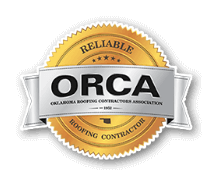Shingles looking worse for wear? It happens to the best roofs. From curling edges to missing pieces, damaged shingles can sneak up on you and quickly lead to costly repairs if ignored. But don’t worry—fixing these issues doesn’t have to empty your wallet. At Maupin Roofing, we specialize in practical, affordable solutions to replace roof shingles and prevent further damage, all while keeping your roof in top shape. Let’s talk about how to tackle shingle damage without breaking the bank!
Inspect Your Roof
Regular roof inspections are key to spotting small problems before they turn into bigger (and more expensive) ones. Whether you’re climbing up yourself or calling in the pros, a thorough check can save time, money, and a lot of stress down the road.

What You’ll Need:
A sturdy ladder
Roofing nails (for any quick fixes)
Safety gear like gloves and non-slip shoes
Binoculars (for inspecting hard-to-reach areas from the ground)
A notebook or phone to record what you find
What to Look For:
Cracked or Torn Shingles:
These can let water seep through, leading to leaks and structural damage.
Old Shingles:
If shingles look faded, brittle, or worn out, they may be nearing the end of their lifespan.
Curled Shingles:
Edges that curl up or down indicate age or improper ventilation and need attention.

Roof Damage:
Look for sagging areas, dark streaks, or moss growth, which can signal deeper issues.
Missing Shingles:
Gaps in your roof’s coverage are an open invitation for water damage.
Flashing Issues:
Check around chimneys, vents, and skylights for gaps or rust.
Gutters and Downspouts:
Debris buildup can block proper drainage and cause water backup onto the roof.
Taking the time to inspect your roof can help you spot early warning signs and plan repairs before they become a larger issue. If climbing up isn’t your thing, a Maupin Roofing contractor is here to help with professional inspections and roof repairs.
Damaged Shingles, Now What?
Damaged shingles can cause a ripple effect of problems if left unaddressed, but tackling the issue doesn’t have to be overwhelming. Here’s a step-by-step guide to addressing shingle damage effectively.
Step 1: Assess the Damage
Start by identifying the extent of the problem. Are there just a few curled or missing shingles, or is the damage widespread? Pay attention to any signs of water stains on your ceiling or walls, as these can indicate leaks caused by damaged shingles. A thorough assessment will help you decide whether you need a simple repair or a full replacement.
Step 2: Gather Your Materials
For minor repairs, you’ll need:
Replacement shingles (matching the existing ones if possible)
Roofing nails
A pry bar or flat crowbar
Roofing cement or adhesive
A hammer and utility knife
If the damage is extensive, it may be time to contact a professional roofing contractor like Maupin for expert help when it comes to roofing in OKC.
Step 3: Remove the Damaged Shingles

Carefully lift the shingles above the damaged ones using a flat pry bar. Remove the nails holding the damaged shingle in place and slide it out. Take your time to avoid breaking the surrounding shingles, which can make the repair more complicated.
Step 4: Replace Shingles
Replace damaged shingles by sliding the new shingle into place, aligning it with the surrounding shingles. Secure it with roofing nails, making sure they’re driven just above the shingle tab. Use a small amount of roofing cement to seal the edges and prevent wind or water from lifting the new shingle.
Step 5: Address Curled Shingles

For shingles with curled edges, apply roofing cement underneath the curling portion and press it back into place. Use a heavy object or brick to hold it down for a few hours while the adhesive sets.
Step 6: Inspect Nearby Areas
Shingle damage rarely occurs in isolation. After making repairs, inspect nearby areas for additional weak spots, loose nails, or small cracks that might cause issues down the line.
Step 7: Prevent Future Damage
Trim overhanging branches to reduce the risk of falling debris.
Keep gutters clean to prevent water from pooling on your roof.
Schedule regular roof inspections to catch problems early.
Addressing damaged shingles promptly can save you from costly repairs and further damage. Whether it’s a quick fix or a major repair, Maupin Roofing has the expertise to get your roof back in shape and protect your home for years to come.
Roof Shingles: Are They All the Same?
Not all shingles are created equal, and understanding the differences can help you maintain and repair your roof more effectively. Here’s what to know about common types of shingles and what to look for during inspections.
Asphalt Shingles: The Popular Choice
Asphalt shingles are widely used for their affordability, durability, and ease of installation. They come in two main types: 3-tab shingles and architectural shingles.
3-tab shingles: These are thinner and less expensive but may not last as long.
Architectural shingles: Thicker and more durable, these offer a more dimensional look and better longevity.
When inspecting asphalt shingles:
Look for cracks, tears, or missing granules, as these can expose the underlying layers to weather damage.
Check for shingles curling due to excessive heat or poor ventilation.
Inspect for signs of mold or algae growth, especially in damp or shaded areas.
Roofing Sealant: Why It Matters
The sealant on shingles plays a crucial role in keeping them secure and watertight. Over time, exposure to the elements can wear down the sealant.
When inspecting, check if the sealant is applied evenly and whether it’s still sticky and effective.
Gaps in the sealant can allow wind to lift the shingles, making them more prone to damage.

Common Shingle Issues to Watch For
Fix Cracked or Torn Shingles: Small cracks can often be repaired with roofing sealant. Apply the sealant to the crack and press the edges together for a temporary fix until a replacement can be made.
Check All the Nails: Loose or rusted nails can weaken the shingle’s hold, so be sure they’re properly secured.
Severely Damaged Shingles: Shingles with significant tears, missing pieces, or heavy granule loss should be replaced as soon as possible to prevent leaks or further structural damage.
Other Types of Shingles
While asphalt shingles are common, you might also encounter other materials:
Wood shingles: Look for cracks, rot, or insect damage.
Metal shingles: Inspect for rust, dents, or loose fasteners.
Tile shingles: Check for chips, cracks, or signs of shifting due to structural issues.
Understanding the type of shingles on your roof and what to look for during inspections helps you address issues more effectively. If you’re ever unsure about what you’re seeing, Maupin Roofing is here to help with expert advice and professional services tailored to your roof’s needs.
We’re All About Shingle Repairs
What Should I Do About Surrounding Shingles When Making a Repair?
When repairing a shingle roof, it’s important to inspect the surrounding shingles as well. Damage is often not isolated, and adjacent shingles may be loose, cracked, or weakened. Use a flat pry bar to gently lift nearby shingles, checking for hidden problems like loose nails or torn edges that could lead to leaks.
Can Most Shingles Be Repaired, or Should They Be Replaced?
Most shingles can be repaired if the damage is minor, such as a small crack or tear. Roofing sealant can work wonders for quick fixes. However, if the damage is severe or the shingles are old and brittle, replacement is often the better option to maintain the integrity of your roof.
How Can Tree Branches Affect My Shingle Roof?
Overhanging tree branches can cause significant damage to shingles. They may scrape against the roof during windy conditions, loosening granules or tearing shingles. Fallen branches from storms can also cause cracks or punctures. Regularly trimming trees near your home helps reduce these risks.
Should I Call a Roofing Professional for Roof Repairs?
While small repairs might be manageable for a confident DIYer, consulting a roofing professional is always a smart move for larger or more complex issues. Professionals can assess your entire roof for hidden damage, recommend the best course of action, and complete repairs safely and effectively.
Whether it’s fixing a single shingle or addressing widespread damage, knowing when to seek expert help is key to keeping your roof in top shape.
Protect Your Roof, Protect Your Home

Your roof is more than just shingles—it’s your home’s first defense against the elements. Addressing shingle damage promptly and understanding the nuances of roof care can save you from costly repairs down the road. Whether you need a quick fix, a full replacement, or advice on maintaining your roof, Maupin Roofing is here to help.
Don’t let minor issues turn into major headaches. Contact us today for expert guidance and reliable roofing solutions tailored to your needs. Let’s keep your roof strong and your home secure.

Choosing the Perfect Roof for Your Property: Materials, Color, & Design
Roofs unfortunately have an expiration date. So, when it’s time to replace your old roof, you should be aware of the top considerations when choosing

Fixing Shingle Damage and Curling Without Breaking the Bank
Shingles looking worse for wear? It happens to the best roofs. From curling edges to missing pieces, damaged shingles can sneak up on you and

5 Easy Ways to Get Rid of Rust on Metal Roofs
Despite the well-deserved praise metal roofs get because of their sturdiness and long-lasting nature, even they can run into trouble over time. More specifically, one

Unveiling Backyard Bliss: The Art of Fence Craftsmanship for Your Outdoor Space
Outdoor living is a treat for anyone with a backyard, but without the right fence, it’s hard to turn your space into a true outdoor

The Importance of Proper Roof Installation Techniques
Got a roofing project coming up? If you do, then you must be curious about the roof installation process. At Maupin Roofing, we follow the

Why Your Home Deserves High-Quality Gutter Systems
When was the last time you gave your gutters a second thought? They might not be the most glamorous part of your home, but they








